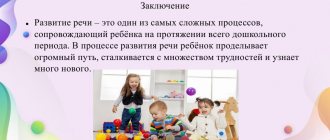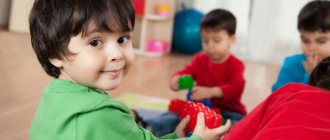We describe the objects around us, our actions and sensations
The Child Development project offers parents, educators and teachers eleven original practical tasks for the harmonious all-round development of the child. Completing tasks will develop imagination and fantasy, expand your vocabulary and horizons, and will help you remember the spelling of words. During classes with such handouts, the child will acquire the ability to classify objects, develop attention and observation, improve the culture of speech, and interest in learning the language.
Completing the proposed tasks will contribute to the formation in children of a positive attitude towards learning, instilling self-confidence and their educational capabilities, which is an important key to the comprehensive development of the child.
Learning to describe sensations. This set of tasks will help your child expand his vocabulary and learn to more accurately describe objects in the world around him and his feelings. In this way, the child will develop figurative and abstract thinking and writing skills.
We describe the properties of objects, creatures and substances. This kit will help your child learn to compare and describe objects and creatures based on specific characteristics, while simultaneously developing drawing, reading, observation and attentiveness skills.
Describe the pictures: use of adjectives. This set of tasks will help your child learn to describe objects and creatures and use adjectives correctly in speech. The set contains 24 drawings, for each of which the child must select 5 adjectives that characterize him.
We describe the sequence of actions: skills of coherent written speech. This set of tasks will help your child learn to describe a sequence of actions and practice written, coherent speech skills. In each of the 8 tasks, the child is asked to describe the stages of performing a certain action.
Drawing, question, sign: we classify objects. The proposed task will familiarize children with the lexical meaning of words that name the characteristics of objects, will develop the ability to ask questions about words, and will enrich their vocabulary. The child is asked to select questions and a sign for each picture and connect them with arrows.
Item materials: distributing words. The proposed task will help the child learn about the names of materials (paper, wood, glass), learn to distinguish and name the properties and qualities of objects, and enrich their vocabulary. By completing tasks, the child will learn to compare, group, classify objects according to materials and properties, and find common and different things.
Describe the pictures and compare. This set of tasks will help your child learn to describe and compare creatures, and express their thoughts and conclusions in writing. The tasks will help you enrich your vocabulary, develop fine motor skills, writing and comparison skills, and learn to express thoughts consistently.
We describe concepts and learn to think. This unusual activity asks your child to think about important concepts that we use every day, but usually don't think about their deeper meaning. According to the terms of the task, the child needs to describe each of the proposed concepts using three adjectives.
Cold or hot? We analyze objects of the surrounding world. The proposed task will help the child learn to distinguish the properties and qualities of objects, determine the common and distinctive features of objects in the surrounding world, compare, combine, and divide into groups. By completing the task, the child will develop logical thinking, intelligence, and curiosity.
We describe imaginary places: develop imagination. This set of activities will help your child develop their imagination and learn to describe different places, drawing on their experience. By completing tasks, the child will develop creative abilities and fine motor skills, and learn to express thoughts consistently. During group work, you can ask children to read their descriptions out loud and compare.
Edible, inedible. We analyze objects of the surrounding world. The proposed task will help the child learn to distinguish the properties and qualities of objects, determine the common and distinctive features of objects in the surrounding world, compare, combine, and divide into groups based on common characteristics.
Each task can be printed on a regular or color printer and used an unlimited number of times. Downloading tasks for children is available to site users after quick registration.
Notes “Describe the subject”
Let's check who's right. Let's play "Magic Bag". A small ball is placed in the bag. Children touch the object and determine its shape.
-What do you think it is? (Ball).
- We already have the ball. What colour is he? (Green)
— What color is the ball in the bag? (Cannot be determined)
The ball is taken out of the bag. It is concluded that the shape of an object can be determined by looking at it and touching it with your hands, but the color can only be seen.
4. “What color.” The speech therapist places a “color” symbol card on the board.
- What do you think we will call it? (Color)
Children pass the ball and name the object being demonstrated and its color: the pillow is blue...
5. “Say it kindly.” The children are shown balls.
- What do the balls have the same? (Color)
- What are the differences between the balls? (Size)
- Big ball, what should we call the small one? (Ball).
Children pass the ball and call the objects on display affectionately: sun - sun...
6.Phys. just a minute. Exercises are done by reciting a poem:
“We'll clap our hands, we'll stomp a little.
Let's shake our heads.
We shouldn't be discouraged. Let's raise our hands.
Now let’s sit down together, we really need to rest.
We'll clap our hands and stamp our feet a little."
7. “What it’s made of is what it’s called.” The speech therapist attaches a symbol card “what is it made of” to the board. It turns out that the objects that people made are made of different materials. Iron, wooden and plastic buttons are on display. Children examine and feel the buttons and, in conjunction with a speech therapist, form relative adjectives: a button made of iron is iron, a button made of plastic is plastic, a button made of wood is wooden. When passing the ball to each other, children use relative adjectives, giving characteristics to the objects being demonstrated: an iron top - an iron top.
8. “What does it feel like?” The speech therapist places a “what it feels like” symbol card on the board. What else can you say about an object if you don’t see it, but only touch it? Let's check. Game "Magic Bag". There is a small soft toy in the bag.
- What does the object feel like? (Soft).
-What do you think is in the bag? (Children's answers).
Show the toy. Children pass the ball and name the objects on display, characterizing their structure (hard, soft, prickly)
9. “What does it taste like?” The speech therapist places a “taste” symbol card; lips or tongue are depicted on it.
- What else can you say about edible items? (What do they taste like).
Children, passing the ball, remember foods that have a given taste.
- What's sweet? Sweet apple (sour, bitter, salty)
10. Exercise “Describe me.” Children, with the help of a speech therapist, using picture symbols, make up a descriptive story about a toy kitten, a spruce twig, a ball, an orange.




